The OLPC has driven important innovations in open software, hardware, universal design and environmental sustainability in order to be cheap and durable enough for widespread use in developing countries. At this week’s unveiling of new designs for second-generation laptops, I spotted this interesting exhibit on the design touches that make the OLPC stand out in terms of durability and do-it-ourself repairability, which like the sunlight-readable displays should trickle their way up into consumer designs. Among the most notable elements highlighted in this post-it exhibit: there are extra screws inside the hollow carrying handle which can be used to replace lost ones along the product’s long life-cycle (above). The motherboard is easily accessed and all of its components are on one side, making them easier to replace (below).
The LED backlight and the speakers are all user-replaceable and standard components which could be used for other projects (above), while the keyboard is waterproof and easily converted for different languages and alphabets (below).
Finally, the most important element to ensuring a long and productive life for these globe trekkers of consumer electronics: the entire laptop can be disassembled and reassembled using only these tools:
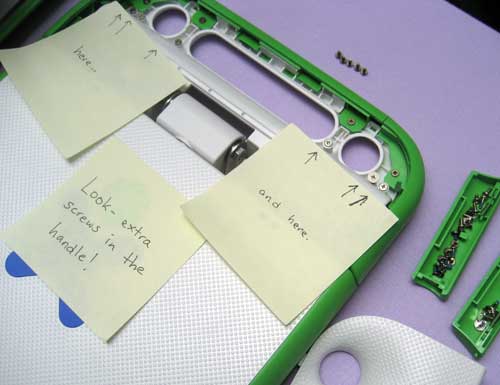
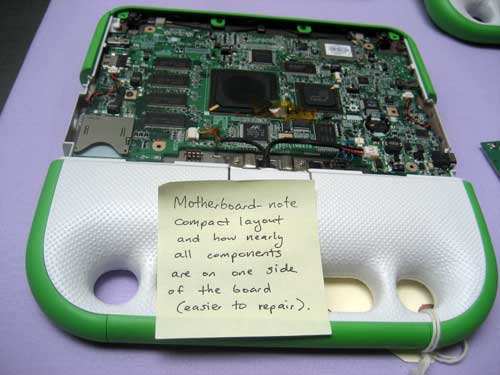
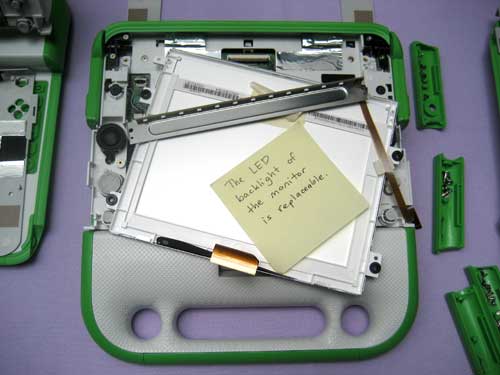
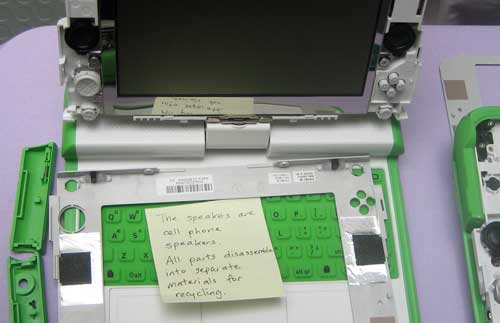

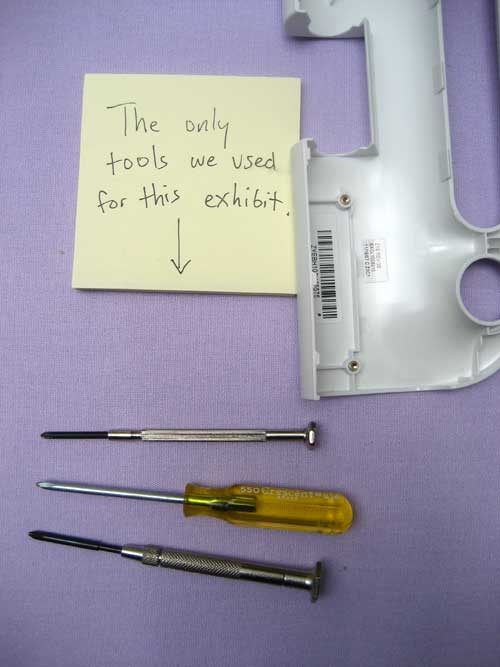
One Trackback
[…] cloth and clothing made from a combination of cloth and rice paper. There is a lot of talk about design for durability, but even better is the conscientious reuse of temporary materials. This solution looks like it […]